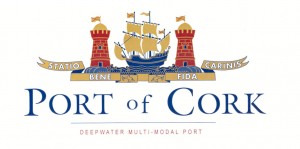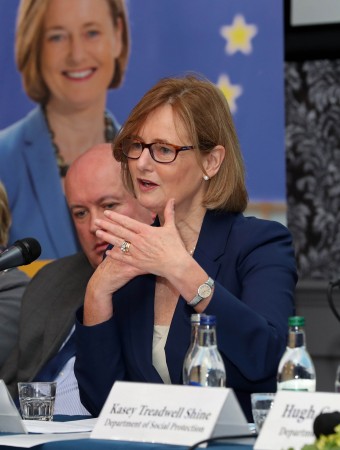19 January 2017
By Bryan T. Smyth
bryan@TheCork.ie
Total traffic through the Port of Cork reached 9.2 million tonnes in 2016, a slight decrease compared to 2015 traffic. Import figures remain steady while exports were reduced primarily due to the closure of Lisheen Mines in Co. Tipperary and the subsequent cessation of exporting lead and zinc through the Port of Cork in 2016.
Total container volumes through both Tivoli and Ringaskiddy Container Terminals grew by 2% compared to 2015 figures, with over 209,000 TEU’s handled. The growth in container handling at the Port of Cork is very encouraging particularly as the Port moves to redevelop Ringaskiddy Port as their main container terminal. In 2016 the largest container vessel to visit an Irish Port called to Ringaskiddy on route from Central America. This weekly service not only ensures the Irish grocery market is fully supplied with fresh fruit, but positions Cork as deep sea port capable of handling panamax size container vessels.
Trade in Dry bulk cargos such as animal feed, fertilisers and cereals saw a marginal decrease while liquid bulk cargo, predominantly the oil traffic handled through Whitegate Oil Refinery now Irving Oil, also reported a slight decrease. Positively, in 2016 family owned Canadian company Irving Oil acquired Phillips 66, securing the future of Whitegate Oil Refinery. This positive step was welcomed by the Port of Cork and will ensure Ireland remains competitive within the global oil market and has a security of supply of crude products that can be refined within the Irish State and not be totally dependent on international events. Whitegate supplies 30-40% of the Irish refined fuel market through its road loading facility and by sea to Irish and international ports over its marine jetty.
Speaking about the 2016 trade traffic figures the Port of Cork Chairman Mr. John Mullins said: ‘The trade results for the Port of Cork in 2016 are overall very encouraging despite some decreases in certain trades. We are very pleased with the results as achieving traffic figures which are in line with pre-recessionary time highlights the positivity returning to the market and I am confident that the port can sustain this growth across 2017. In particular container traffic through Tivoli and Ringaskiddy increased by 2% with imports fractionally higher than exports. There was impressive growth in the imports of trade cars with over 46,000 vehicles imported.’
He continued: ‘In addition to the overall trade traffic figures, the Port of Cork’s cruise business has gone from strength to strength with a total of 58 liners visiting Cork during 2016. This high number of calls brought over 127,000 passengers and crew, helping to drive visitors to the region. Furthermore, in 2016, Cobh was named the second Best Cruise Destination in the British Isles & Western Europe in the first-ever Cruise Critic Cruisers’ Choice Destination Awards, which we are immensely proud of. In 2017 69 cruise liners are scheduled to call and 2018 is looking even stronger.’
2016 saw Brittany Ferries operating another successful year with their service from Cork to Roscoff carrying almost 80,000 passengers in 2016 and it is anticipated that 2017 will be another busy year for Brittany Ferries when sailings resume in March.
In 2015 An Bord Pleanala granted a 10-year planning permission to Port of Cork for the redevelopment of the existing port facilities at Ringaskiddy. In July 2016 the Port of Cork submitted to the Board a request to alter the terms of the permission granted to enhance the long-term sustainability of the port. The €80 million port redevelopment will future proof the facility and Port of Cork look forward to the project progressing in 2017.



